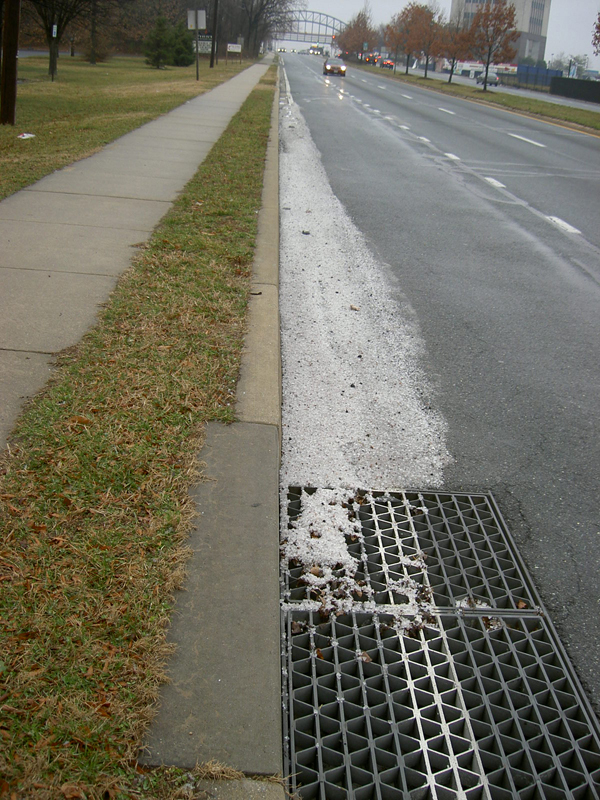
Road salt heading to the Chesapeake Bay.
One of the things I hate the most about living out here is the way they deal with winter weather. Or rather, the ways in which they don’t deal with it. During the first year we were here, there was a blizzard. A good old-fashioned three-feet-of-snow-shuts-the-city-down-for-a-week kind of blizzard, of the type that also shut down the east coast in February of 1996. Not surprisingly, DC didn’t have enough salt or sand or plows or trucks or workers to clear the streets in the days after the blizzard. I say not surprisingly not because DC government is a bunch of backwards eejits, but because no government could have had enough salt or sand or plows or trucks or workers to deal with this level of snow. I say this having lived in Pennsylvania during the blizzard of 1996 and having grown up in places where at least once per year two or three feet of snow can be expected; when these things happen, it takes a while to clear the roads. Period.
However, local residents’ expectations did not align with this reality, and so there was a lot of protesting and blaming and complaining and accusing following this blizzard, the result of which was overcompensation with regard to all future winter weather. In some ways, the overcompensation was amusing: schools were closed in anticipation of an inch of snow, snow which sometimes never materialized. As I was teaching at the time, I enjoyed frequent days off. The other way in which people in the area overcompensate, though, remains completely mind-boggling to me, and that is the coating of the roads and sidewalks with salt. Salt which is rarely needed at all, let alone to the degree it’s applied, and which therefore mostly ends up in the local soil and water system.
I can’t remember ever using salt on sidewalks except during an actual ice storm. Where I come from, we use a shovel and the sun: shovel the snow, let the sun do the rest. In the rare instances where patches of ice develop we either (1) walk around them or (2) use the shovel to break them up and clear them from the sidewalk. Out here, people either don’t shovel their walks at all or shovel them and then cover the damp surfaces with a layer of salt. Sometimes, as in the photo above, the surfaces are completely coated with salt in anticipation of the possibility of snow or freezing rain that never materializes. As a walker, this means I’m walking in the grass throughout most of the winter to avoid having my shoes deteriorate through constant exposure to chunks of salt. Which is annoying, but not nearly so annoying as seeing buckets of salt heaped at the side of the road and dripping into the storm drains, drains which flow to the Chesapeake Bay.
I took the above photo a month ago, on January 22nd, at the end of the day on which the salt was applied. Much of the pile of salt is still there, six weeks later. I suppose I could be glad that it’s still there, rather than all in the water system; mostly, though, it just makes me angry. I shudder to think what the water in our local creek must be like, and try to remember to fill the birdbath with fresh water each day. I know that other locals are concerned about the chemical runoff into the water system, including members of the Town Council. So I try not to let it get to me and focus on maintaining my little chemical-free soil haven for the local grubs and insects, which in turn feed the local moles and birds, which in turn feed the local hawks, possums, raccoons, and foxes.